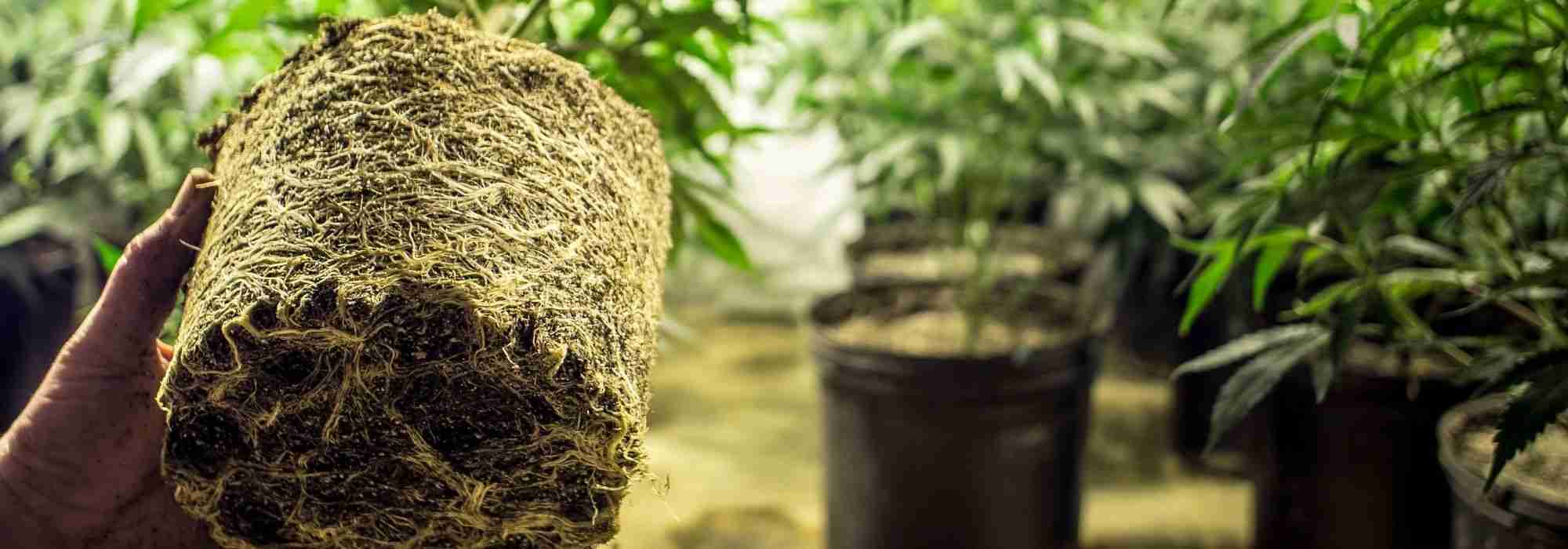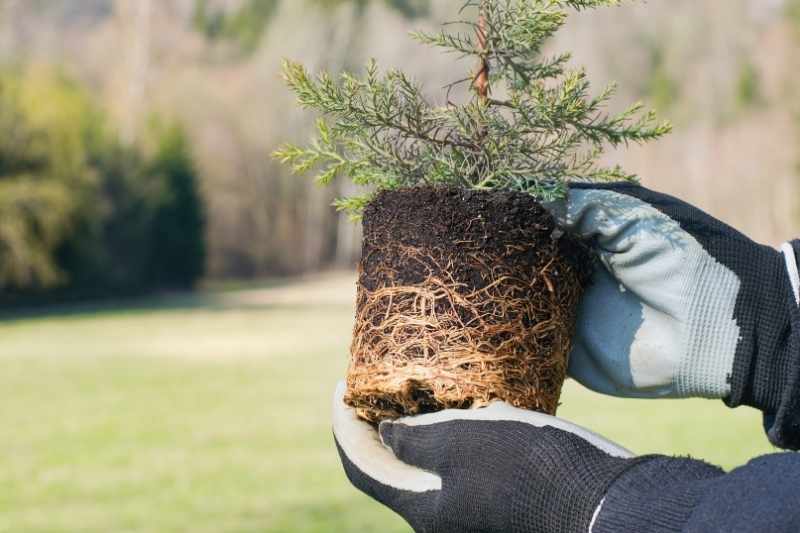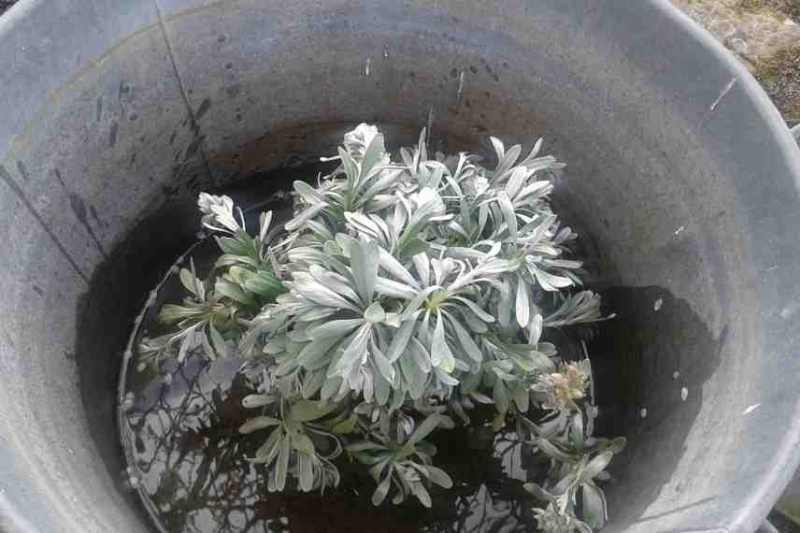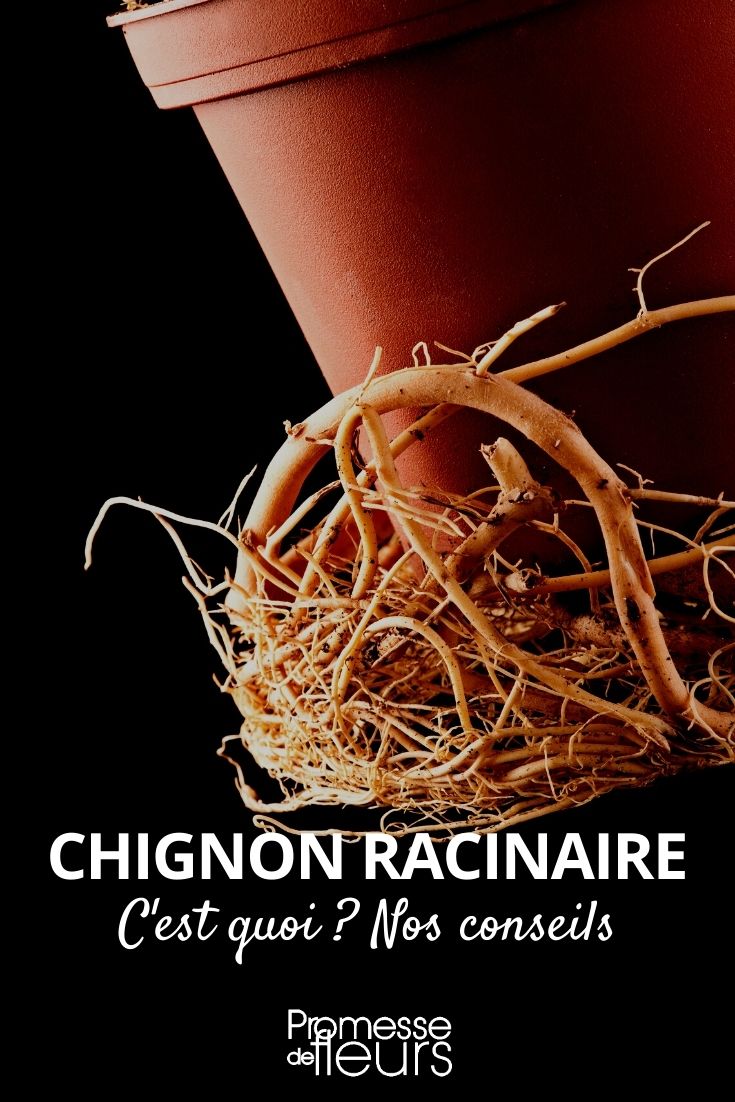
Root-related bun
What is it and how do you avoid it?
Contents
When buying a plant, people check its visible parts, whether foliage is healthy and shows no signs of disease, but rarely inspect its roots.
Formation of a root-related tangle is common in plants grown in pots. Is it problematic ? Discover our tips to avoid it, undo it where necessary and plant in favourable conditions.
What is a root-related chignon?
This phenomenon occurs when plant is too cramped or has remained too long in its container, it will tend to develop a solid tangle of roots that specialists call the “chignon”.

All these buckets have roots that have “chignonné”
Most people often don’t realise that plants need oxygen at root level. That is precisely why potted plants tend to press roots against gap between potting compost and wall of container. This intermediate zone allows roots to come into contact with air.
In nature, earthworms and other small soil organisms burrow galleries and allow oxygen to circulate in soil. In a bucket filled with sterile compost, no organism is present to perform this function.
This explains why lawn and many other plants grow less well on trampled soil, which becomes asphyxiated by soil compaction and obstruction of galleries.
Use of fertilisers for potted plants will also encourage this phenomenon by stimulating production of roots, aggravating situation.
Finally, small volume of soil available to plant will prompt it to exploit every bit of pot to colonise roots, leading to a kind of “relating to root traffic jam”.
Read also
The different types of root systemsIs that problematic?
Nothing is ever purely black or white and, in fact, it depends. With a perennial, the problem is not very serious. With a bush, it can be problematic, but it all depends on the essential oil and degree of “chignonnage”. Indeed, when a chignon forms early and the plant spends a long time in its pot or has undergone several repottings, the chignon will have formed at the core and you may not necessarily see it. In that case, establishment will be truly complicated.
Indeed, when a bush in a pot with a root girdle is transplanted into soil without intervention, the plant continues to circle in its planting hole. This phenomenon makes establishment of the plant difficult, because it will struggle to produce new roots. This increases risk of root diseases, as well as insufficient anchoring during a storm. In case of trees, this will lead to structural imbalance of the specimen and cause it to fall. For woody plants in general, the collar of the plant ends up being strangled by these circling roots, leading after a few years to decline of the plant.
Finally, this disturbed development of the root system makes plants less resistant to drought, notably those possessing a taproot intended to seek water deep in the soil.

Root girdling is particularly problematic for bushes and trees
However, it is possible to undo the root girdle before planting.
How to plant a plant with a root ball?
Before planting :
- Soak rootball in a bucket of water to saturate substrate. Roots will be easier to handle and less brittle this way;
- Remove plant from container: if root-bound condition not severe, gently tease it apart and spread roots in planting hole.
- If root-bound condition more severe, loosen rootball by scarifying around perimeter using pruning shear or a sharp knife and, if necessary, cut away entire base of rootball. If roots grow out through pot holes and plant is difficult to remove: pot will need to be cut to free trapped roots. These operations will of course stress plant, but they will also allow root system to ramify again quickly. Plant will then begin to explore surrounding soil by developing horizontal roots in planting hole;
- If root-bound condition really severe, operation is a rescue procedure and there is little to lose. Untangle as much as possible, even exposing roots, and cut twisted roots at centre of rootball. This severe technique should be carried out in autumn or winter, when plants have entered dormancy. They will then have time to re-root before arrival of warmer weather. At same time cut back top growth to rebalance plant and reduce evapotranspiration.
- Water thoroughly over following weeks.

Note: Sometimes a bush in your garden stagnates or declines for no apparent reason. Don’t hesitate to unearth it and carefully inspect its rootball to see what is happening.
Tips to prevent root-binding in your potted plants
- If a plant in a pot needs repotting into a new container, repot every two or three years at most;
- The biodegradable turf bucket for young plants prevents this phenomenon. As soon as roots grow out of the bucket, they will be “air-pruned” (dried out) on contact with air, which will encourage formation of new roots without them becoming tangled. This bucket is an excellent alternative to the ubiquitous plastic in the horticultural medium;
- The forest bucket for trees with taproots (oak, pines, walnut…) reduces formation of a root ball, as its depth is greater than 20 cm. The main root will not (or very little) bend at the bottom of the pot;
- There are pots with vertical ribs that guide roots vertically and prevent them from coiling;
- When possible, check plant condition before buying. Lift the pot and check that no excessive entanglement of roots has formed outside the pot, a sign of a root ball.
In conclusion
Although containers have many advantages (extended planting season, root protection, ease of transport…), they remain only a temporary solution and can sometimes be problematic for certain plant species.
Plants purchased as bare roots are more fragile to transport but often start their new life in better conditions, without a root ball.
We recommend not making plants wait an extra season unnecessarily when planting in open ground is possible. Untangling any formed root ball is an essential step when establishing your plants permanently, to ensure good establishment.
- Subscribe!
- Contents
































Comments